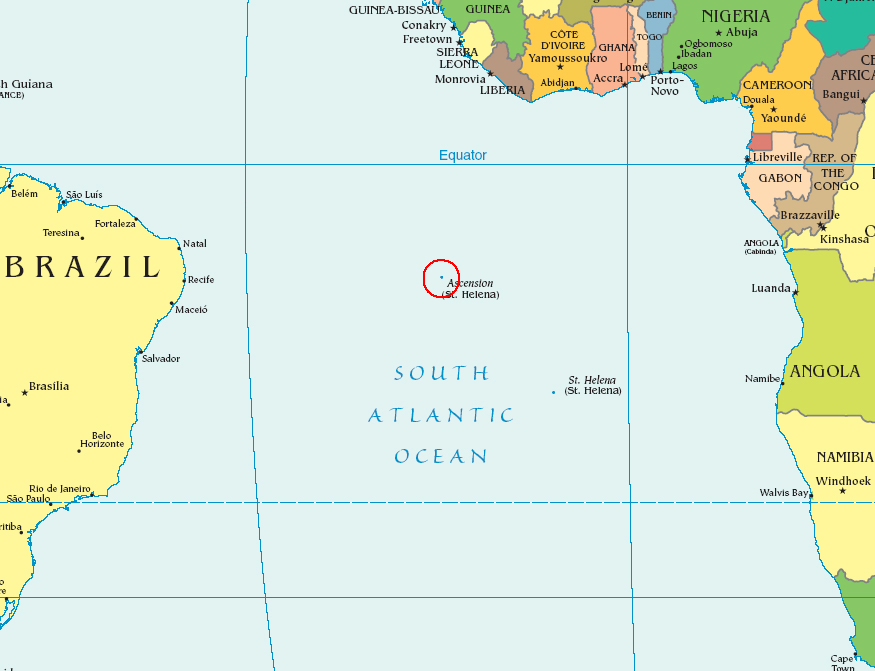Ascension Island is a volcanic island located about halfway between the horn of South America and Africa whose name derives from Ascension Day, the Catholic calendar day on which it was sighted by a Portuguese navigator in 1503. “The main island has an area of approximately 91 km2. A volcanic peak rising from just west of the Mid-Atlantic Ridge, much of the island is a wasteland of lava flows and cinder cones; no fewer than forty-four distinct craters have been identified…The island originally had its own native flora until Portuguese explorers released goats in the 1500s which ate much of it. The later introduction of rabbits, sheep, rats and donkeys, and over 200 imported species further marginalized the original flora. By 1843 the island was barren with few plants” (source).
And then along came Darwin. Nearing the end of his famous voyage on HMS Beagle, Darwin stopped at Ascension Island in 1836. “He found it to be an arid island, devoid of fresh water and trees; St Helena residents had described it to him as a ‘cinder’ of an island. He mused that forestation was the only means of developing the island further. In 1843, botanist and explorer Joseph Hooker visited the island. Four years later, Hooker, with much encouragement from Darwin, advised the Royal Navy that with the help of Kew Gardens, they should institute a long term plan of shipping trees to Ascension. The planted trees would capture more rain and improve the soil, allowing the barren island to become a garden. So, from 1850 and continuing year on year, ships came, each depositing a varied assortment of plants from botanical gardens in Argentina, Europe, and South Africa. By the late 1870s, Norfolk pines, eucalyptus, bamboo, and banana trees were in lush profusion at the highest point of the island, Green Mountain, creating a tropical cloud forest” (Ibid.).
Howard Falcon-Lang, a science reporter for the BBC, recently posted a fascinating article about “Charles Darwin’s ecological experiment on Ascension isle” on the BBC Science and Environment online news. He begins by stating: “A lonely island in the middle of the South Atlantic conceals Charles Darwin’s best-kept secret. Two hundred years ago, Ascension Island was a barren volcanic edifice. Today, its peaks are covered by lush tropical ‘cloud forest.’ What happened in the interim is the amazing story of how the architect of evolution, Kew Gardens, and the Royal Navy conspired to build a fully functioning, but totally artificial ecosystem. By a bizarre twist, this great imperial experiment may hold the key to the future colonization of Mars.” Read on!
Article by Bill Norrington





